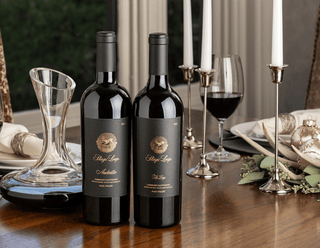It Begins in the Vineyard
The journey of learning about wine is a lifelong pleasure. From learning about winegrowing to the sensory experience of wine to your palate, there is so much to explore. To help you start your journey, or as a refresher for the already knowledgeable, we’ll be exploring wine from A-Z, starting with the fundamentals of wine growing.
Where it All Begins
After a vine is planted, it typically takes three to five years for it to establish strong root systems and yield its first modest harvest, aptly called the "young vine" stage. However, true maturity, where the vines reach its full potential and produces high-quality grapes, is only achieved after a decade or more of growth. At the Stags’ Leap estate, we have vines that are more than 40 years old. This kind of maturity adds depth and complexity to our petite sirahs and cabernet sauvignons.

From Flower to Grape
Once a vine reaches maturity and starts producing fruit, it will follow a four-phase cycle. It all begins with bud break, an enchanting moment in early spring when dormant buds burst into tender green shoots, signaling the start of a new growth cycle. Vineyard managers keenly observe this stage, as it sets the tone for the rest of the growing season.
As warmer weather arrives, the vine puts out tiny white flowers that will eventually turn into grapes. This phase is called flowering. The next pivotal stage is veraison, where the grapes shift from green to red or white, depending on the varietal. This is the first indication of ripeness and the final phase in the growing process. The crescendo of the vine's journey is harvest. This is a period of excitement and anticipation as winemakers work to get the fruit off the vine at the perfect ripeness and begin the winemaking process.
Climate and Terroir
Climate and terroir profoundly influence the character of a wine. The climate of a specific region determines the overall temperature, precipitation and sun exposure that the vines experience. These climatic elements directly impact the grape's ripening process, sugar levels, acidity and flavor development. On the other hand, terroir encompasses a broader concept, including not only climate but also soil composition, topography and the vineyard's unique microclimate.
The combination of these elements imparts distinctive characteristics to the grapes, giving rise to wines with a sense of place and individuality. Winemakers who deeply understand and work in harmony with their region's climate and terroir can craft wines that reflect the essence of the land, forging an authentic connection between the vineyard and the glass.



